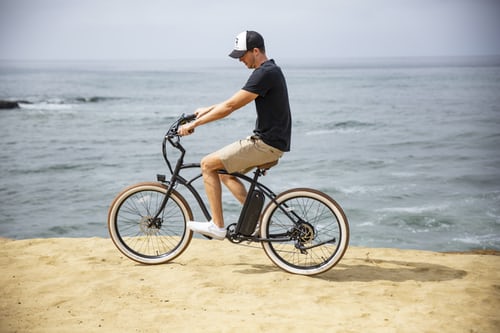From 2019 to 2020, the importation of electric bicycles doubled. That indicates an increase in the demand for e-bikes over the past year. Of the many benefits of riding an electric bike for commute, the most significant may be the decrease in carbon emissions compared to a gas-powered or even electric automobile. Despite the increased popularity and benefits to the environment, there are roadblocks in the way of widespread electric bike adoption. One of the most significant is cost. High-quality e-bikes can cost several thousand dollars. This puts them out of the reach of most consumers.
Two lawmakers are seeking to decrease carbon emissions by making e-bikes more accessible to more Americans, especially those with low income. To that end, they have proposed federal legislation called the Electric Bicycle Incentive Kickstart for the Environment Act, shortened to the E-BIKE Act.
Who Are the Legislators Behind the E-BIKE Act?
The bill originated in the House of Representatives and has two sponsors: Earl Blumenauer of Oregon and Jimmy Panetta of California. Panetta, the bill’s main sponsor, attended the University of California-Davis, where bicycling is a way of life. He sees the potential for electric bikes to help stop climate change by reducing carbon emissions and wants to encourage more people to buy them by making them more affordable.
What Would the E-BIKE Act Do?
The E-BIKE Act would apply to the purchase of e-bikes or e-cargo bikes costing less than $8,000. Individuals who bought a new e-bike would be eligible for a tax credit for 30% of the purchase cost. The tax credit is capped at $1,500, but it would be refundable, meaning that not only would it reduce the amount of tax owed, but taxpayers could receive it back at the end of the tax year. By introducing this bill, Panetta and Blumenauer hope to incentivize the purchase of e-bikes by subsidizing them through the tax credit.
How Could the E-BIKE Act Help the Environment?
By incentivizing more people to purchase electric bicycles, the E-BIKE Act would also encourage more people to use them for commuting, especially once they figured out the difference between pedal assist and electric bike. Making a difference wouldn’t take much. Studies show that a person could reduce his or her greenhouse gas emissions by 12% by spending 15% of total travel time on an electric bicycle.
The E-BIKE Act has its limitations. It only subsidizes electric bike purchases, not conversion kits that would add battery power to a traditional bike. It also doesn’t do anything to improve infrastructure to make it more bike-friendly. Critics of the bill also argue that increased demand because of the rebate would push bicycle prices up. However, this would likely even out over time. The bill’s sponsors acknowledge that there are many improvements that could go into the E-BIKE Act and that it wouldn’t fix all the problems related to climate change on its own. However, it would definitely be a step in the right direction.
The E-BIKE Act was only introduced recently, so it has a long way to go before it becomes law. If you prefer not to wait, you can purchase an e-bike now from an online dealer.










